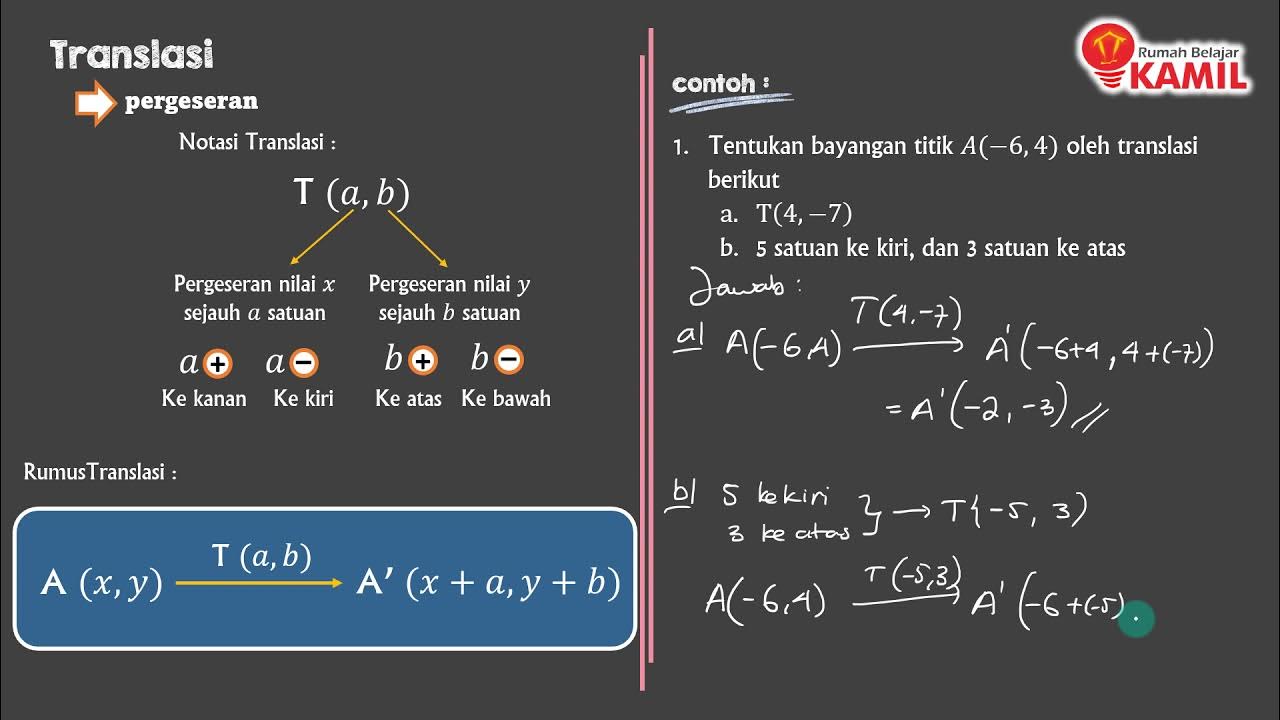IPA Kelas 9 : Listrik Statis 1 (Konsep Dasar Listrik Statis)
Summary
TLDRIn this video, Kak Kamil introduces a 9th-grade science lesson on static electricity. The lesson covers six main topics: basic concepts of static electricity, electric forces, electric fields, electric potential, electricity in human nerves, and electricity in animals. The video explains the phenomenon of static electricity using examples like lightning and rubbing balloons on hair. The lesson discusses how imbalance in electron movement creates positive or negative charges in objects. The process behind lightning formation is also explored, emphasizing how electron transfers between clouds and the Earth generate the electric discharge.
Takeaways
- ⚡ The lesson covers static electricity for Grade 9 students, focusing on its key concepts.
- 💡 Static electricity refers to electrical phenomena resulting from an imbalance of charges on objects.
- 🌩️ Lightning is an example of static electricity, caused by charge buildup and electron movement between clouds and the Earth.
- 🎈 Rubbing a balloon on hair can cause hair to be attracted to the balloon due to charge transfer, another example of static electricity.
- 🔬 Atoms are the smallest units of matter and consist of protons, neutrons, and electrons.
- ➕ A positively charged object has more protons than electrons, while a negatively charged object has more electrons than protons.
- 🔄 Electron transfer between objects can occur through rubbing or contact, causing changes in charge.
- 📊 The triboelectric series ranks materials by how easily they give or receive electrons, with ebonite being hard to give electrons and materials like skin giving electrons easily.
- 🧲 In experiments, rubbing plastic rulers with hair transfers electrons from hair to the plastic, making the ruler negatively charged and the hair positively charged.
- 🌪️ Lightning occurs due to charge differences between clouds and the Earth. Electrons jump from the cloud to the Earth, creating the visible flash and thunder.
Q & A
What is static electricity?
-Static electricity refers to electrical phenomena that occur due to an imbalance of electrical charges on an object. This imbalance can lead to effects such as lightning or a balloon attracting hair when rubbed.
What are some everyday examples of static electricity?
-Examples include lightning, which is a large-scale result of static electricity, and the attraction of hair to a balloon after rubbing it on your head.
How does an atom relate to static electricity?
-Atoms consist of protons, neutrons, and electrons. The movement or transfer of electrons between objects is what causes static electricity, with one object becoming positively charged and the other negatively charged.
What happens when an atom loses or gains electrons?
-When an atom loses electrons, it becomes positively charged because there are more protons than electrons. When it gains electrons, it becomes negatively charged because the number of electrons exceeds the number of protons.
What is the triboelectric series, and how does it work?
-The triboelectric series ranks materials based on their tendency to give up or gain electrons. Materials at the top, like ebonite, are less likely to give up electrons, while those at the bottom, like silk, are more likely to give up electrons.
What happens when a plastic ruler is rubbed against hair?
-When a plastic ruler is rubbed against hair, electrons transfer from the hair to the plastic ruler. The ruler becomes negatively charged, and the hair becomes positively charged.
How does the concept of electron transfer explain why glass becomes positively charged when rubbed with silk?
-Glass tends to lose electrons more easily than silk. When glass is rubbed with silk, electrons move from the glass to the silk, leaving the glass positively charged and the silk negatively charged.
How does lightning occur as an example of static electricity?
-Lightning occurs when there is a large buildup of negative charge in the lower part of a cloud and a positive charge on the ground. The difference in charge creates a discharge in the form of a lightning bolt as electrons move from the cloud to the ground.
What causes the sound of thunder after lightning?
-The intense heat from a lightning strike causes rapid expansion of air, leading to a shockwave, which we hear as thunder.
Why does lightning usually strike tall objects like trees and buildings?
-Lightning strikes tall objects because they are closer to the cloud base, reducing the distance the electrons have to travel between the cloud and the ground.
Outlines

This section is available to paid users only. Please upgrade to access this part.
Upgrade NowMindmap

This section is available to paid users only. Please upgrade to access this part.
Upgrade NowKeywords

This section is available to paid users only. Please upgrade to access this part.
Upgrade NowHighlights

This section is available to paid users only. Please upgrade to access this part.
Upgrade NowTranscripts

This section is available to paid users only. Please upgrade to access this part.
Upgrade NowBrowse More Related Video

KELISTRIKAN PART 1: LISTRIK STATIS (IPA KELAS 9 SMP)

IPA Kelas 9 : Listrik Dinamis I (Arus Listrik dan Penghantar Listrik)

Matematika Kelas 9 : Transformasi Geometri (part 1 : Translasi)

IPA Kelas 9 : Listrik Dinamis 2 (Rangkaian Listrik : Hukum Ohm dan Hukum Kirchhoff)

IPA Kelas 9 : Sistem Perkembangbiakan Tumbuhan (Part 3 : Pembuahan Ganda pada Tumbuhan Angiospermae)

SOAL LATIHAN BAB 4 LISTRIK MAGNET DAN SUMBER ENERGI ALTERNATIF (IPA Kelas 9 Kurikulum Merdeka)
5.0 / 5 (0 votes)